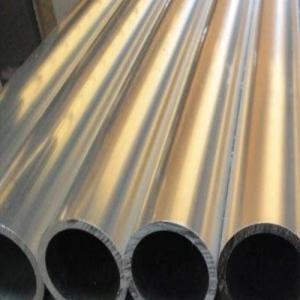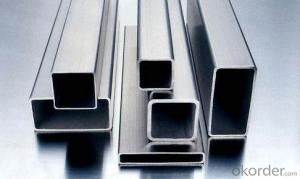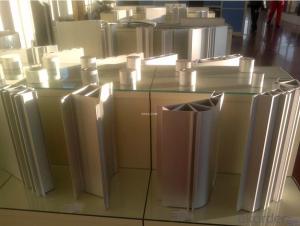Aluminum Pipes for Electric Aluminum Profiles
OKorder Service Pledge
OKorder Financial Service
You Might Also Like
We are the largest aluminum profilemanufacture in
Material | Alloy Aluminum 6063,6061,6005,6082 or customer nominated |
Temper | T3, T4, T5, T6 and other |
Surface | Anodize, electrophoresis, powder coating, PVDF coating, etc. |
Colour | Any colour based on Standard Germany RAL Mark |
Length | Not more than 16 meters |
Good Package | Inner plastic film /outside carton/wooden pallets |
Payment Method | T/T, L/C, etc |
Delivery Time | Normally 2-4 weeks, Delivery time can be consulted. |
Press Machine | 500-12500 tons all together 93 press lines. |
Fabrication | 1. Furniture 2. Drilling; 3. Bending; 4. Cutting; 5. etc. |
Certificate | ISO/TS 16949,DNV,IRIS,CCS,AFA,etc. |
Dies | 1. Using our dies, no fee; |
2. Using customer drawing, opening dies, usually about 5~50 tons then the dies cost can be refunded. | |
3. Die cost is negotiable base on the order quantity | |
Capability | Annual output 800,000 tons |
- Q: Which refrigerator, evaporator, aluminum tube?
- As far as I know, the freezer of the Haier three direct cold refrigerator is an aluminum tube, which you can see directly
- Q: Ask for advice,According to the type of aluminum alloy, Al-Si, Al-Mg, Al-Mg-Si, Al-Mn, Al-Cu, Al-Zn-Mg (T0-T8 heat treatment); if the steel type crystal like austenite, ferrite, Aluminum Alloy have similar crystal like heat treatment, whether similar to the regulation, for advice! Thank you
- There is no phase change in the process of heating aluminum alloy, so there is no corresponding hard treatment by heat treatment. However, some aluminum parts which are extruded by cold can be softened by heat, but the softening process is more to eliminate the stress without phase change. For these Aluminum Alloy you said, in fact, we often say that the 4XXX series, 6XXX series, 5XXX series aluminum forging, antirust aluminum, 3XXX series, 2XXX series aluminum, aluminum 7XXX series, 7XXX series I've seen can be tempered (just to stress), other if there is no need to do heat treatment, but the aluminum can generally do hard oxidation hardening, but surface hardening, the hardness is not the core.
- Q: How do aluminum pipes compare to plastic pipes in terms of durability?
- Aluminum pipes generally offer higher durability compared to plastic pipes. Aluminum is a stronger and more rigid material, making it less prone to cracking, warping, or breaking under pressure or extreme temperatures. Additionally, aluminum pipes have a longer lifespan and are less susceptible to degradation from UV exposure or chemical reactions. However, plastic pipes may be more resistant to corrosion and are often cheaper and easier to install. The choice between aluminum and plastic pipes ultimately depends on the specific application and desired durability requirements.
- Q: What are the specifications of aluminium tubes?
- Shanghai pan bamboo company specializing in the production of aluminum pipe, thin-walled tubes, thick walled tubes, small diameter tubes, large diameter tubes, small caliber thin-walled tubes, small caliber thick wall pipe, large diameter thin-walled aluminum tube, large diameter thick walled tubes, various specifications of aluminum rodNo specifications can be customized to find Ke Chunquan Oh, I hope to help you oh!
- Q: A sewage pH=5, containing a small amount of NaCl and sodium sulfate, from the corrosion point of view should be used iron tube, aluminum tube or ceramic pipe?
- The Al pipe is the iron tube againBecause the metal activity order table is: K, Ca, Na, Mg, Al, Zn, Fe, Sn, Pb (H), Cu, Hg,, Ag, Pt, AuAluminium is more iron than iron, so it is more active than iron, and PH=5 is acidThe activity of metals decreases gradually from strength to strengthSummary: 1. Only the metal placed in front of the H can displace the hydrogen in the acid2 only the metal in the front can displace the metal that is placed behind it from its salt solution
- Q: How do aluminum pipes perform in salty environments?
- Aluminum pipes perform quite well in salty environments due to their natural resistance to corrosion. Unlike other metals, aluminum forms a protective oxide layer when exposed to air, which acts as a barrier against saltwater. This oxide layer prevents the metal from corroding and minimizes the effects of saltwater on the pipes. However, it is important to note that prolonged exposure to high concentrations of saltwater can still lead to some corrosion over time. Therefore, regular maintenance and inspections are recommended to ensure the longevity of aluminum pipes in salty environments.
- Q: Unique aluminum plastic pipe and folder tubes which do Kaitai warm water pipe is better?
- Italy Ke Yi's pure import aluminum plastic composite pipe is good. In Europe, with imported Swiss good, ground heating pipe is a competitor.
- Q: Are aluminum pipes suitable for outdoor applications?
- Indeed, outdoor applications can indeed benefit from the use of aluminum pipes. The reason lies in the fact that aluminum is a lightweight and long-lasting material with remarkable resistance against corrosion, rendering it highly suitable for outdoor purposes. It can endure severe weather conditions, including rainfall, snowfall, and exposure to sunlight, without undergoing degradation or rusting. Furthermore, aluminum pipes boast an extended lifespan and demand minimal maintenance, thus emerging as an economical option for outdoor applications like irrigation systems, outdoor furniture, handrails, and structural supports.
- Q: Can aluminum pipes be used for solar panel frames?
- Yes, aluminum pipes can be used for solar panel frames. Aluminum is a popular choice for solar panel frames due to its lightweight, durability, and resistance to corrosion. It is also easy to work with and provides good structural support for solar panels.
- Q: Which is better, titanium alloy or high pressure aluminium tube?
- we must consider the actual use, can use aluminum alloy place, aluminum alloy than titanium alloy is good, otherwise, titanium alloy is best.
Send your message to us
Aluminum Pipes for Electric Aluminum Profiles
OKorder Service Pledge
OKorder Financial Service
Similar products
Hot products
Hot Searches
Related keywords























